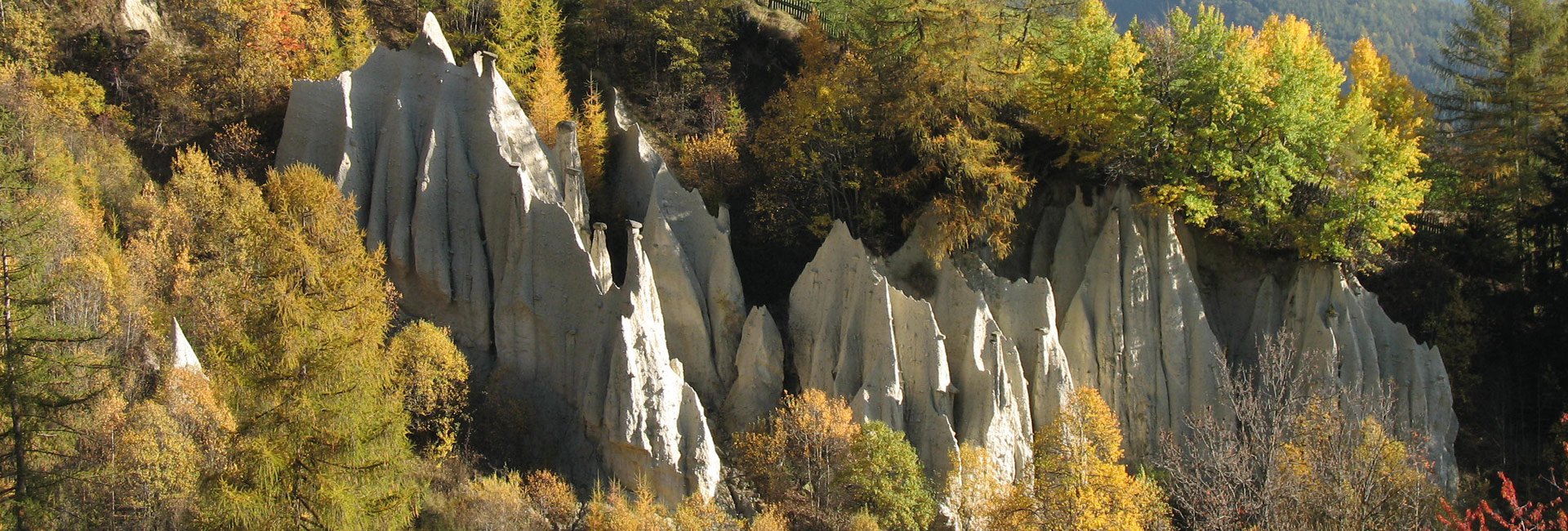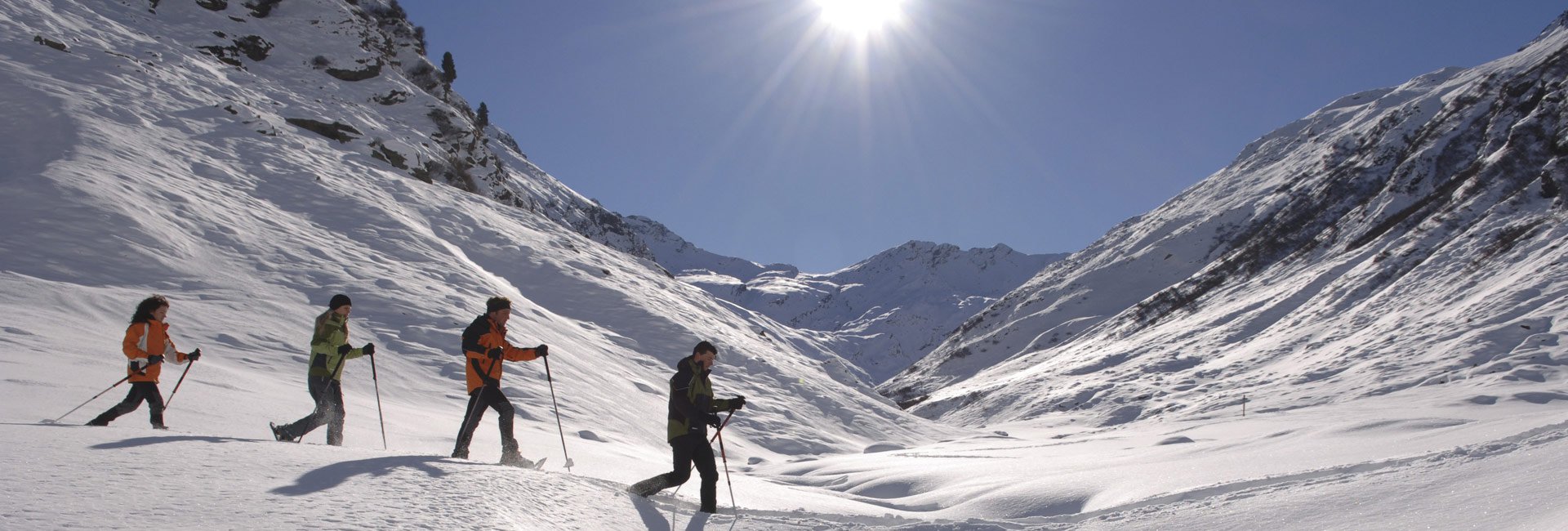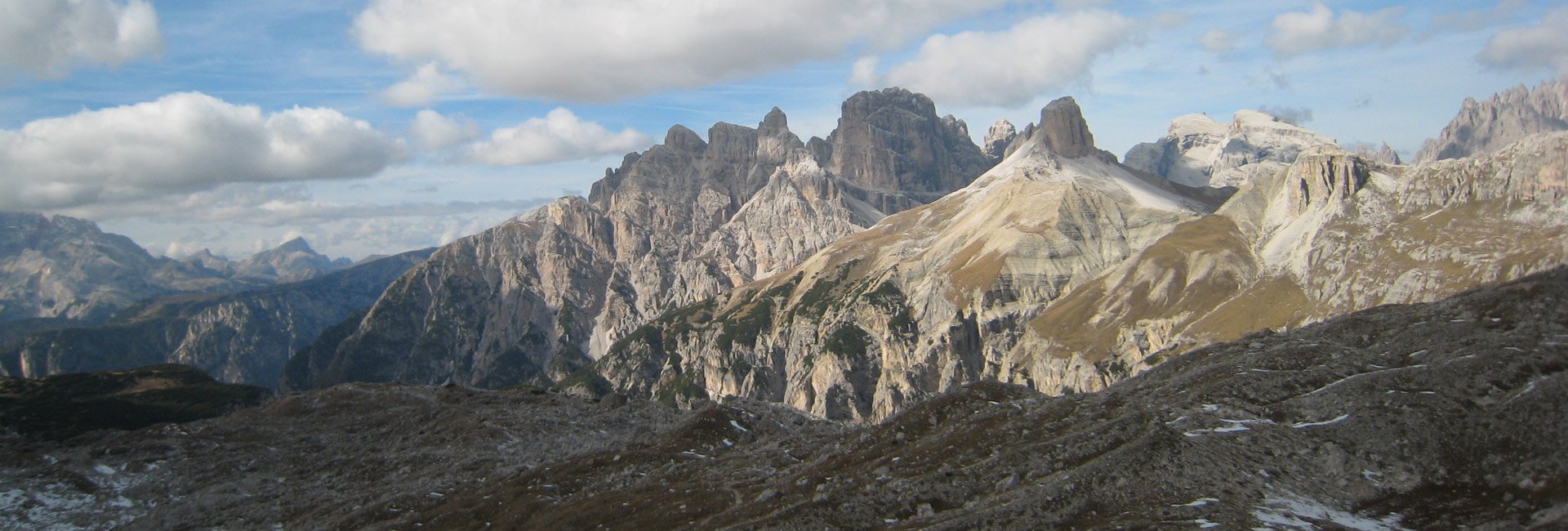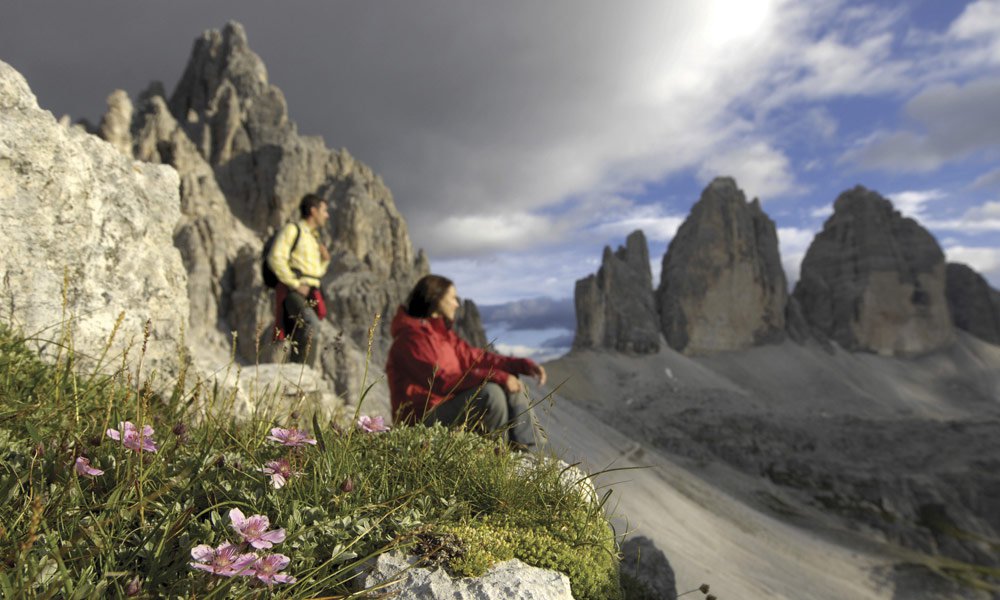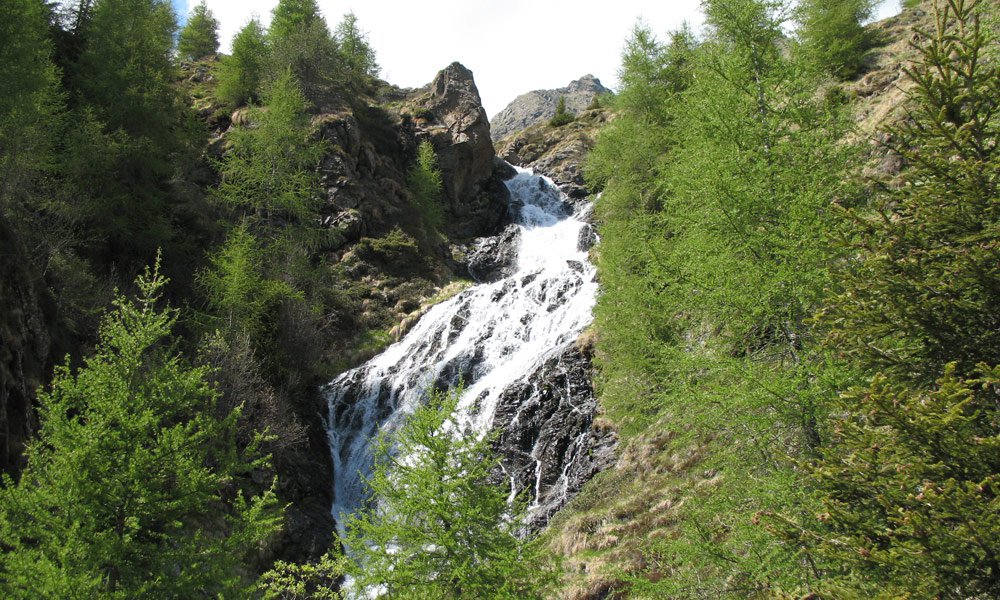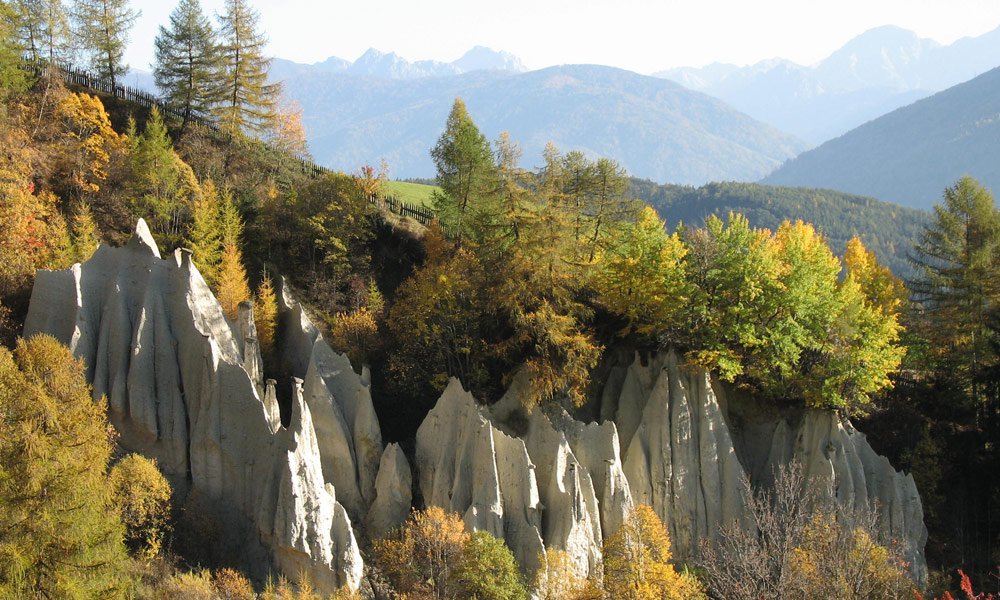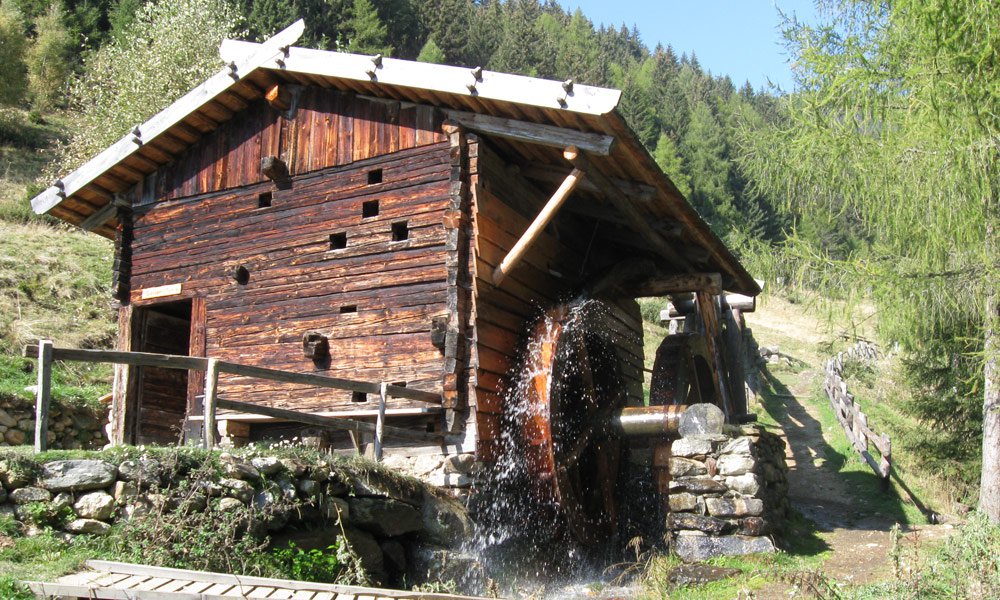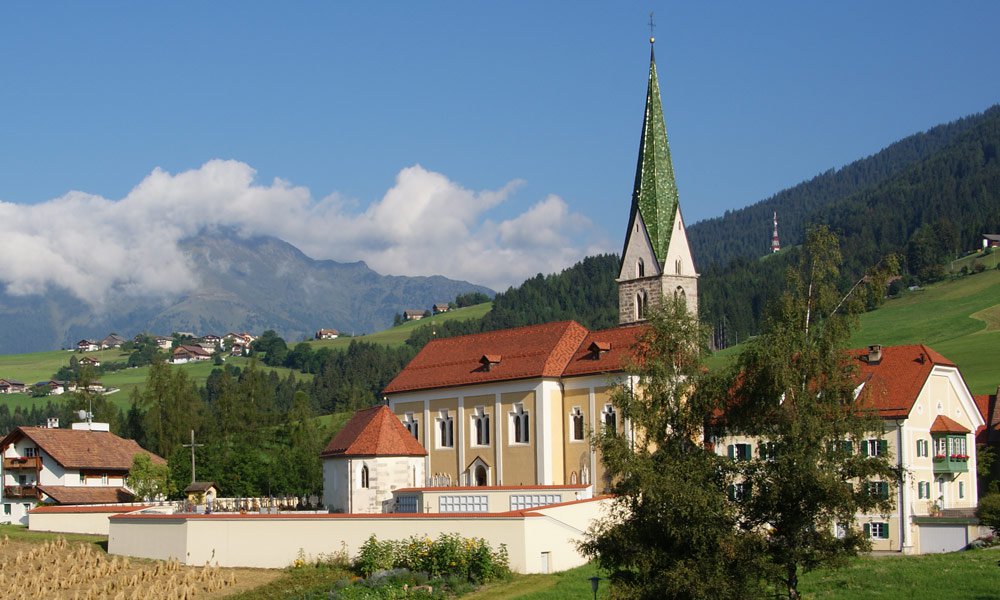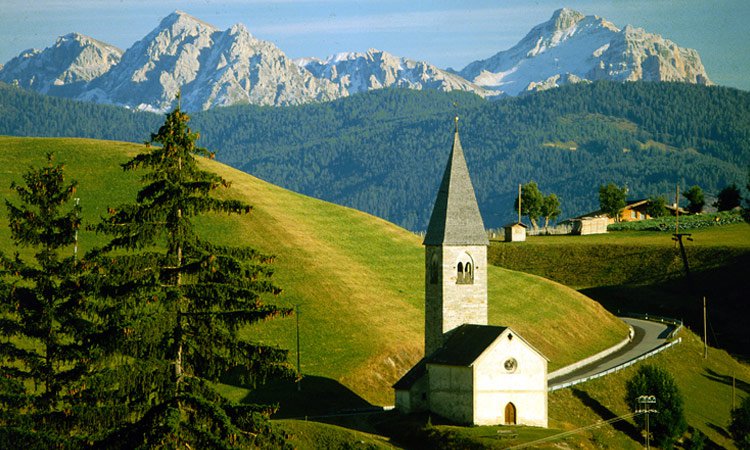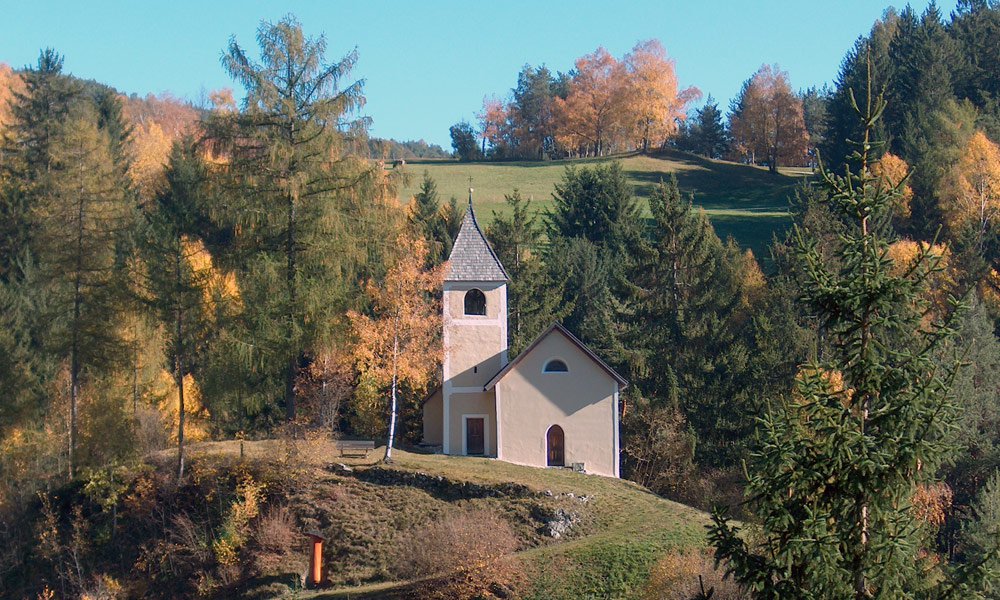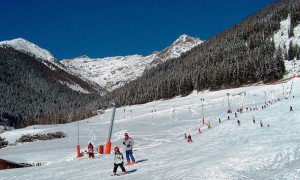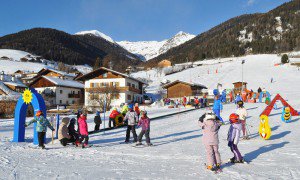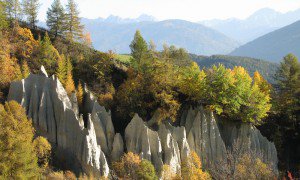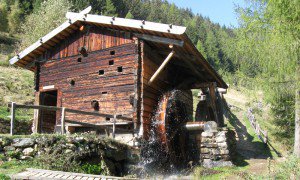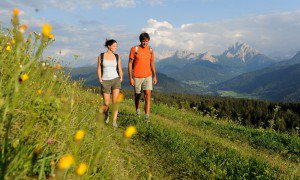Interesting sights in the surroundings of Terento
In the surroundings of Terento
Biotope ‘Pirchner Moss’
The biotope “Pirchner Moos” is located at 1,300 m above sea level with a slight southern inclination. Bressanone granite provides the geological base of the biotope. The biotope impresses with two different vegetation areas. A small fen and swamp with a high moor-like edge can be found at the centre of the biotope.
The small wetland is surrounded by marsh areas and wet meadows, loose forest areas and hedges. In the marsh area you can find different types of moss like sphagnum, but also bogbean, bog star, swamp meadowgrass, common tormentil, sedges and different types of the wild orchid. The marsh areas used to be mowed for the production of horse food and litter for the stables.
The variety of flora in the biotope provides an ideal living space for different animals. Here you can admire primeval animals like dragonflies and the azure damselfly. In certain weather conditions you might also be able to see fire salamanders. The common buzzard loves the free space of wetland meadows.
The border between the southern alpine and northern alpine rock composition of this area is located to the north of the biotope at “Hohenbichl”, the so-called “Puster Valley Line”. This disturbance line is one of the most important earthquake lines in the Alps.
Pyramids in Terento
The formation of the pyramids in Terento probably dates back to 1837. As a result of a strong storm, the Ternerbach River flushed away huge amounts of debris. During the course of the following years, rain and melting snow continued to shape new pillars. These pillars remain intact as long as the covering stone remains on top .
The material of the pyramids origins from the last Ice Age. This is an ideal hike for families with children and very interesting at the same time. The ascent is rather easy. Therefore children and elderly people will have no problem reaching this beautiful site.
Educational path to the Corn Mills
The educational path to the old corn mills starts directly at the hotel. An easy hike along the Terner River leads past the pyramids and on to the corn mills.
From June to September you can observe the corn grinding process every Monday from 10 a.m. to 1 p.m. Furthermore, the tourism office organises guided hikes and excursions to the corn mills from May to the beginning of October.
Saint George - Parish Church
A House of worship was mentioned in Terento in 1362, a church must have been there long before this however. Bishop Hartmann from Bressanone consecrated an altar in 1162. A new long nave was constructed in 1683/84.
The Parish Church was extended from 1848 to 1850 and re-designed in a late Romanic style. A comprehensive restoration took place in 1964. During the course of this restoration, the foundation walls of an almost square-shaped church room from Roman times were discovered. Preserved from the late-gothic building are the choir with its three-sided completion, and the rectangular block stone tower with pointed acoustic windows.
The long nave was reconstructed in late Roman style at the middle of the 19th century. The barrel vault dates back to the late Roman reconstruction and is decorated with ceiling paintings by Christoph Brandstätter. The ceiling paintings were restored in 1896.
The altars of the Parish Church show the transition from classicism to late-gothic. Adjacent to the Parish Church you can admire a late-gothic Holy Cross Chapel, which was consecrated in 1520. The chapel impresses with a polygonal choir and a stellar vault.
S. Margareth in Marga
St. Margareth in Marga was first mentioned in 1309. Only the walls of the long nave can be brought into connection with this period when looking at today’s’ building. A smaller, non-vaulted church was probably the origin of this chapel. The pointed tower was probably constructed at the end of the 14th century, and the long nave was probably vaulted at the beginning of the 16th century.
This is a construction with one nave. The altar room is located in the tower. S. Christopher on the façade is meant to protect the people from storms. With regard to picturesque highlights we can mention the wall painting with the 14 helpers in need on the triumphal arch wall, which has been preserved up to date. The wing altar dating back to about 1500 with sculptures of S. Margaret, Magdalene and Catherine is also very impressive.
The entire altar was restored in 1888. The extraordinary side altar, a painted wing shrine dating back to the beginning of the 16th century is also worth mentioning. In 1948/49 the inside of the church was newly lime-washed and the inventory cleaned.
S. Zeno in Pino
S. Zeno in Pino was constructed during the 12th or 13th century. The chapel is located south-west of the Parish Church on a secluded hill between two ravines. The chapel shows the former Roman construction style at the door and window areas. The tower was added in 1794/1795.
Major construction works took place in 1770. This could be the first time the church was vaulted. The frescos inside the chapel were realised by the Baroque painter Johann Mitterwurzer (1745-1788).
The baroque altar construction with an image of Mary dates back to the second half of the 18th century. Also worth a mention is the bell dating back to 1539. The last restoration took place in 1987/88.



